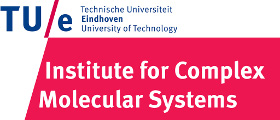Team:TU-Eindhoven/FutureProspects
From 2013.igem.org



Contents |
Future Prospects
Testing Contrast Agents in Tissues
To see whether the bacteria can create enough contrast to be visualized by an MRI machine, we have to perform more tests. Therefore a suggestion is that the bacteria can be injected for example in tissue engineered tissue, on wich an MRI measurement could be performed. This could be done by injecting the pellets which are provided by the cultures of aerobic expression of the CEST proteins.
Promoter Testing & Optimization
For more reliable measurements on the working of the FNR promoter, more experiments should be done. First of all, protein expression should be performed at multiple oxygen concentrations to measure the activity of the promoter in a range of oxygen concentrations.
When testing of the contrast agents under physiological conditions in the tissue-engineered tissues results in too low protein concentrations to get contrast, the promoter has to be optimized. This could be achieved by modifications of the constructs, so that other promoters become activated. Consequently, further modifications and measurements should be performed to create a construct by which higher protein concentrations can be achieved.
Kill Switch Implementation & Testing
When tissue-engineered MRI measurements seem to be promising, one have to think about implementing kill switch mechanism(s), to ensure patients safety. First of all the gancyclovir system could be implemented by transforming the hypoxically inducible CEST protein E. Coli with the vector that contains the response system to gancyclovir. Then the kill switch has to be tested. A simple experiment can be set up for testing the kill switch, by spreading the bacteria that are transformed with the gancyclovir vector on an agar plate and incubating them after adding gancyclovir at half of the agar plate. After a day, the colonies on both the halves of the agar plate can be counted (where at the gancyclovir part none are expected).
To ensure safety, the bacteria should contain multiple safety mechanisms, which can work independently. Further research has to be done on this part.
Decoy Sites
Optimization of the modelling part on the wetlab part can be achieved by, for instance, adding decoy sites in front of the FNR promoter in the construct. When comparing the results of the model and the wetlab results, the model can be optimized by the results provided by the wetlab experiments.
 "
"



